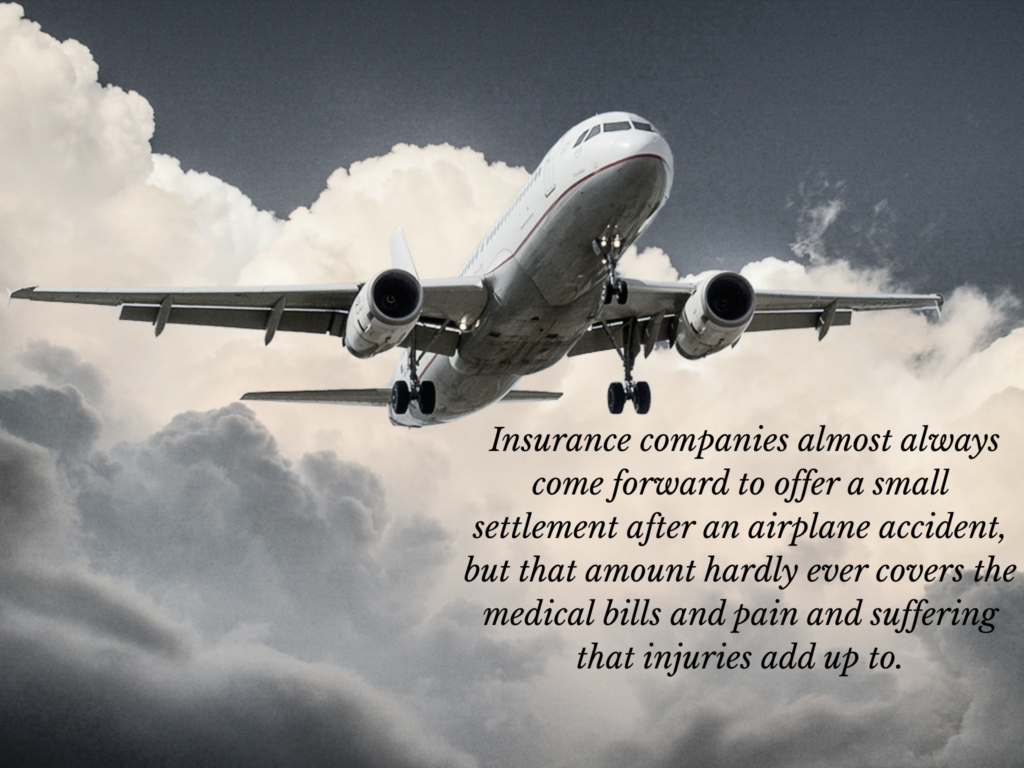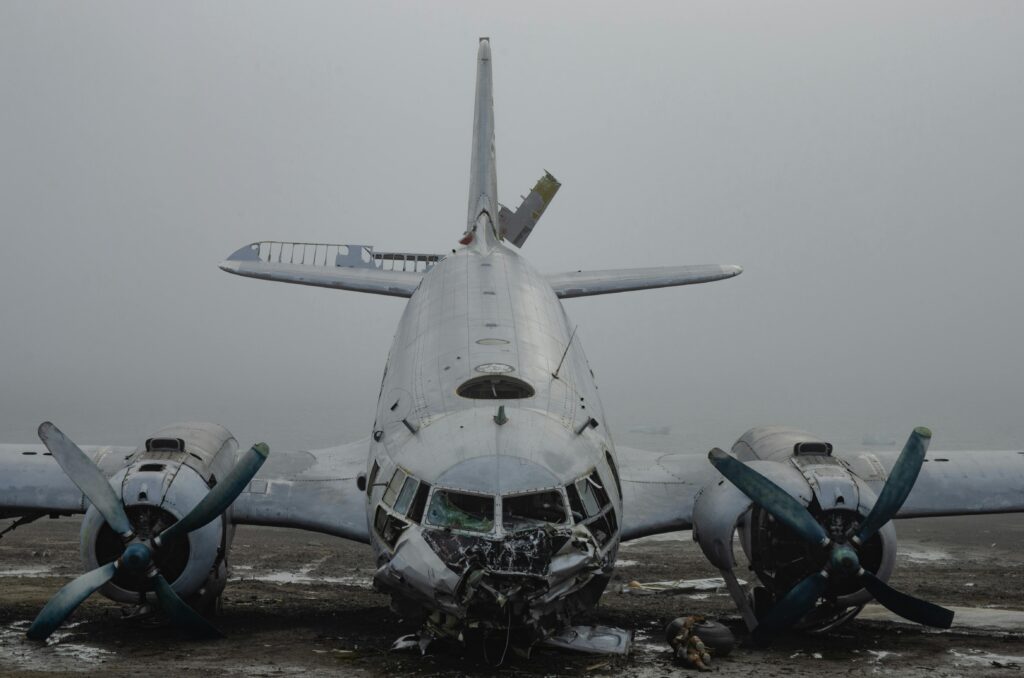In January of 2025, most of us saw on the news that an American Airlines plane collided in mid-air with a Black Hawk helicopter over the Potomac River in Washington, D.C., killing 67 people.
A week later, seven people died when a medical jet crashed near a shopping center in Philadelphia.
On February 6, a commuter plane in Alaska disappeared from radar just before it had a sudden drop in speed and altitude. Rescuers later discovered wreckage across the Bering Sea, and none of the 10 passengers survived.
In mid-February, two small planes collided in mid-air near an airport in Arizona, killing two.
Since then, it seems like we’re continually seeing coverage of airplane accidents and the tragedies they’ve caused. But are aviation accidents more common today than before? And if people are putting their lives at risk by flying, how can they be sure they will receive payment for injuries — or worse, that their families will be compensated if they’re in a fatal crash?
We will go over some of the data and discuss why it’s always best to hire a personal injury attorney if you’re affected by an aviation tragedy.
Just How Common Are Airplane Accidents?
Although seeing plane crashes in the news is alarming, data shows that commercial passenger flight accidents are still rare and that the overall number of recent aviation accidents is not out of the ordinary.
Before the January Washington, D.C. crash, the last fatal commercial passenger flight accident was in 2019 when a PenAir flight overran a runway in Alaska, killing one person. In the past decade, the National Transportation Safety Board (NTSB) has recorded only around 1,100 aviation accidents and incidents each year, and most have been non-commercial aircraft. In a 2024 report, the Bureau of Transportation Statistics said that from 2013 to 2022, U.S. passenger airlines recorded 12 fatalities. Considering that the Federal Aviation Administration handles more than 45,000 flights every day, this number is very small.
Every day, 12 million people board flights somewhere in the world, and on most days, everyone arrives safely at their destination. But because commercial aviation accidents are so rare, they get a lot of media attention when they happen.
So, are aviation accidents more common today than in previous years? Not at all. January and February may have seemed extremely treacherous in the air travel industry, but there were actually fewer accidents in those months than in the previous five years.

What is the Process for Seeking Compensation After an Aviation Accident?
Whether an airplane accident happened on a private aircraft or a commercial airliner, it’s always best to consult with an attorney to ensure fair compensation for injuries. Insurance companies almost always come forward to offer a small settlement, but that amount hardly ever covers the medical bills and pain and suffering that injuries add up to. And it certainly doesn’t compensate for the priceless loss of life in a fatal crash. As a licensed pilot, Samuel I. Kane is uniquely experienced in dealing with airplane accidents and knows the process to follow so clients receive a fair amount:
Determining Who is Responsible
The first step in filing a claim after an aviation accident is to prove that someone’s negligence caused or contributed to the accident. Unlike a car accident where one driver is at fault because he rear-ended another driver at a stoplight, an airplane accident could have multiple parties that caused the crash, including:
The owner or pilot. Pilots of all aircraft are expected to receive extensive training and be fully engaged while flying a plane. A private pilot can be held liable if his or her recklessness caused a crash. If a careless pilot flying a commercial plane causes an accident, the airline can be held liable.
The airplane manufacturer. If any part of the plane is found defective after an investigation, the manufacturer can be held liable. One example is when Boeing failed to properly attach the door plug on an Alaska Airlines plane, and several people were injured when it came off mid-flight.
The airline company. Airlines are responsible for maintenance, pilot training, and abiding by safety regulations. If failure to properly do any of those leads to a crash, the airline can be sued.
The federal government. Under the Federal Tort Claims Act, the government may be responsible for an airplane accident if damages occur because a federal airport employee caused the accident or the government didn’t properly inspect an aircraft. If the January crash in Washington D.C. is found to be caused by air traffic controllers, the victims’ families will be paid by the Federal Aviation Association.
When The National Transportation Safety Board broke down the causes of aviation accidents that occurred between 2012 and 2021, they found that:
- Pilots or other employees were partially at fault 81% of the time. This was due to operational errors, poor actions or decisions, altered psychological status, or insufficient knowledge.
- Aircraft issues contributed to accidents 80% of the time, due to mechanical problems or faulty manufacturing.
- Environmental issues such as weather partially caused accidents 44% of the time. However, weather alone can never be blamed for an airplane accident, since plane companies and operators should follow proper forecasting, planning, and equipment checks to ensure safety during poor weather.
Working with the National Transportation Safety Board
In the United States, the NTSB is responsible for investigating all aviation accidents. They work with the FAA, local authorities, and other stakeholders to analyze flight records, interview witnesses, and inspect wreckage. Their final report outlines probable cause and makes safety recommendations. Attorneys use these findings to go after the party believed to be responsible for the accident.
Out of respect for grieving families and because the investigation takes time, the Aviation Disaster Family Assistance Act prohibits attorneys from contacting accident victims or their families until 45 days after the crash. However, accident victims may contact an attorney as soon as they are ready to discuss their case.
Calculating the Extent of Damages
Financial amounts owed to airplane accident victims are often very high because of the losses endured. Fatalities leave grieving families with high funeral expenses and loss of household income. A personal injury lawyer can help file a wrongful death case to cover any hospital bills, funeral costs, family members’ mental pain and suffering, loss of companionship, and loss of financial support.
Surviving crash victims likely have endured head injuries, broken bones, amputations, and severe burns that require extensive hospitalization and rehabilitation. Mental and emotional trauma from the accident will likely last years, requiring counseling services and the possibility of not being able to return to work. Filing a personal injury claim is the best way to ensure these expenses will be covered.
You Don’t Have to Handle Your Grief Alone
Even though aviation accidents are no more common today than they were a decade ago, they do happen. If you or a family member has been the victim of a tragic airplane accident, Samuel Kane can help you from the time the investigation begins until you receive the money you deserve. With a knowledgeable attorney on your side, you won’t have to worry about financial debt caused by the accident; you can simply focus on healing. Contact us for a free consultation today.
Please note that this article was created for advertisement purposes, and it does not constitute any contractual legal relationship, nor imply one.
